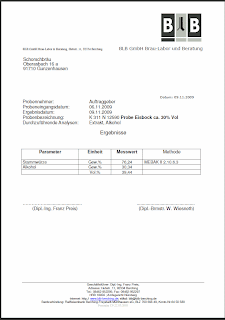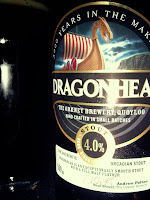A friend linked me to
a short piece on Spiegel Online about the brewing education provided at Weihenstephaner and in Berlin. I have the greatest respect for German brewing technology and beer, but I couldn't help but feel saddened by the tone of the piece. At a time when big breweries are buying out smaller family-run breweries, and there's a perceived continued blandification of beer in this country, the focus on this piece was on the science and how tough it all is, rather than the wonder and joy of making good tasting beer. They say that 80% is done by computer, and the remaining 20% is lab work, although they do also say that there are more brew pubs/restaurants and such. I wonder is this because you no longer have to hold a Braumeister qualification to open a brewery now, or so a person at Berlin's
VLB told me.
The piece goes on to stress the science-heavy parts of the degree, with subjects such as maths, physics, biology and chemistry (fair enough, as brewing as a science is pretty complex), a large drop-out rate, and goes on to say that these people are more often employed in biochemical engineering or pharmaceutical jobs where there's more money.
It also made me grumble that a section is dedicated to comparing the brewing education in Germany to that in the United States, where they say that the brewing courses are not technically comparable. Sure, Germany should be very proud of the technical quality of the brewing process, but it's not helping the apparent decline of what is/was a rich and varied brewing tradition -- even with the
Reinheitsgebot limitations. This self-congratulatory attitude around German beer is best is just sucking the life out of it. I try to pretend this doesn't exist, but it does! I'm so lucky with my colleagues who are really open to new tastes appreciate beer for what it is. But there are most certainly a majority who think German beer is pure and good, and that's all they need to know.
There are wonderful German beers, I know because I'm trying as many as I can. They are often an art of restraint and balance, creating beers that just provide simple pleasure, but there are also beers that leap out as they just stand above the German crowd. But there are so many more really bland, or plain bad ones, and the vast majority of people just either stick local or stick with big TV brands, and wouldn't countenance trying anything else. All that technical wizardry and purity law rubbish doesn't help.

This then reminds me of another piece in the German consumer magazine,
ÖKO-
TEST, that was entitled "
Regional schmeckt besser", or, "Regional tastes better". It popped up online, but a colleague gave me a copy of the magazine so I could see the list of beer reviewed. Essentially, they tested 46 beers, some from small, regional breweries (Pott's and Pinkus from my area), and some from the big national/international brands (Beck's, Warsteiner, Krombacher etc...) covering what I would consider a broad and balanced price/quality range. And the test results? Every single one, bar two, came out as
Sehr Gut, Very Good. One was downgraded to Good because the alcohol content was 1% lower than stated on the label and the other (Wickuler Pilsener) because it had a
bready taste and had a lasting bitterness, unusual in a Pilsener eh?
So, amongst all these
Very Good ones were some that had traces of heavy metals, others that had "thin watery flavour" (Reichenbrander Helles), one that had a "very neutral flavour, soft body and mild taste" (Paderborner Pilsener, fairly near to me). The list goes on, and they used bold font every time a beer had a bready flavour. I like a bready flavour in some beers!
What they do say is in favour of regional beers is the lower impact on the environment due to reduced transportation costs, but this is questionable given the economies in scale that bigger breweries can achieve and the other areas of waste in the brewing process (as talked about recently by
Woolpack Dave). But it does support local economies, and I do like that. In fairness, the magazine make some more emotive points about supporting local business and ensuring that tradition doesn't die.
But Regional Tastes Better? In this, I think the magazine shoots itself in the foot. At the decimal point level of the scores, the top few are regional, but they state that thay can recommend all the beers testsed. Why is everything
Very Good? Is it because it's all good German beer, following the
gebot, so it must be good, even if it's thin, watery and contains traces of heavy metals? If a major consumer magazine can do this, there's no hope in honest appraisals of the beers of Germany by the broader German public itself.
Thanks, Kristian, for the link that got me going.
 Let's do the De Molen stats rundown: brewed on the 19th of February 2009 and bottled on the 8th of October, this has 11% ABV, 388 EBC (that's bloody dark!) and 92 IBUs. Made using Challenger hops for bittering and Saaz for aroma, the beer was then aged in oak (Bordeaux?) casks.
Let's do the De Molen stats rundown: brewed on the 19th of February 2009 and bottled on the 8th of October, this has 11% ABV, 388 EBC (that's bloody dark!) and 92 IBUs. Made using Challenger hops for bittering and Saaz for aroma, the beer was then aged in oak (Bordeaux?) casks.



